








The magazine of the photo-essay

April 2017 back issue

by Michelle Frankfurter


“A free, really high quality photo-essay magazine. Fabulous!”
Stephen Fry. British actor, writer and film & documentary maker
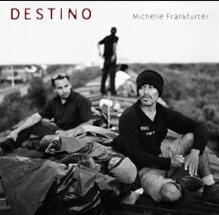
Meaning both “destination” and “destiny” in Spanish, Destino portrays the
perilous journey of undocumented Central American migrants along the
network of freight trains lurching inexorably across Mexico, towards the hope
of finding work in the United States. It is the odyssey of a generation of exiles
across a landscape that is becoming increasingly dangerous, heading towards
a precarious future as an option of last resorts.
Unlike Mexican migration to the United States that dates back to the 1880s,
the unprecedented wave of Central American migration began a full century
later, the consequence of bloody civil wars, U.S. Cold War-era intervention in
the region and crippling international trade policies. Those regional conflicts
left a legacy of drug and gang related violence, a high incidence of domestic
abuse, and unrelenting poverty.
Migration as an issue is current; the story of migration is timeless. Having
grown up on the adventure tales of Jack London and Mark Twain, and then later on Cormac McCarthy’s border stories,
there is no storyline more compelling to me than one involving a youthful odyssey across a hostile wilderness. With a
singularity of purpose and a kind of brazen resilience, migrants traverse deadly terrain, relying mostly on their wits and
the occasional kindness of strangers. In documenting a journey both concrete and figurative, I convey the experience
of individuals who struggle to control their own destiny when confronted by extreme circumstances, much like the anti-
hero protagonists of the adventure tales I grew up reading.
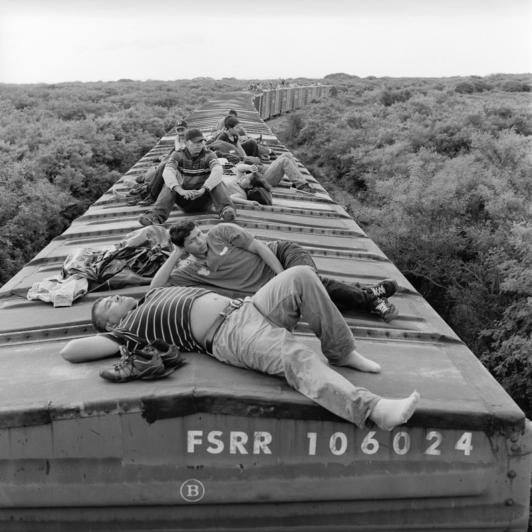
Undocumented Central American migrants ride a northbound freight train through the
southern Mexican state of Oaxaca during the first leg of the journey by rail to the U.S.
border. July 18, 2010.
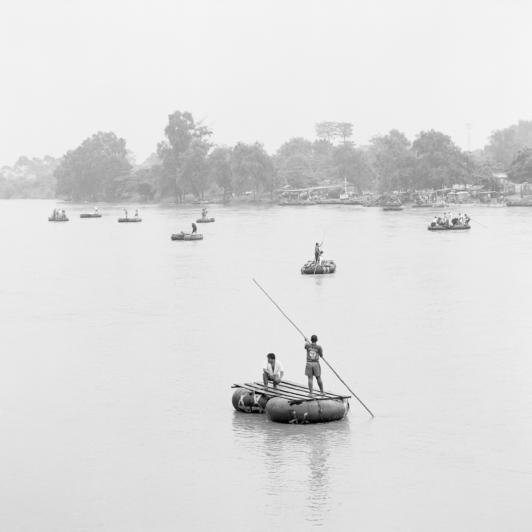
Rafts made of tractor tyres lashed together ferry contraband goods and undocumented
migrants across the Suchiate River running between the Guatemalan border town of Tecún
Umán and the Mexican town of Hidalgo in the state of Chiapas. June 2009.
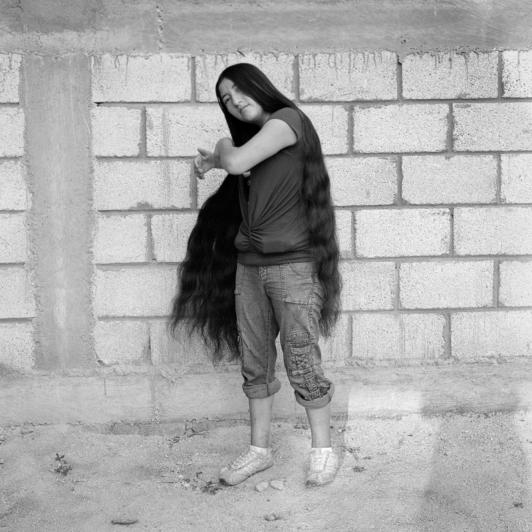
Honduran migrant, Hermanos en El Camino migrant shelter, Ixtepec, Oaxaca, June 10,
2009.
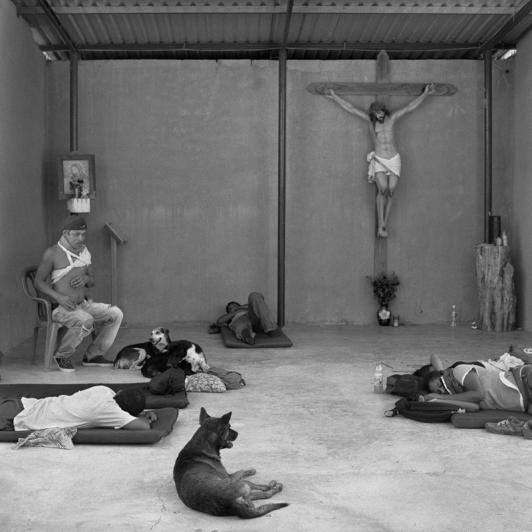
Weary and injured migrants rest in the makeshift chapel of the Hermanos en El Camino
migrant shelter in the small town of Ixtepec in the Mexican state of Oaxaca. June 6, 2009.
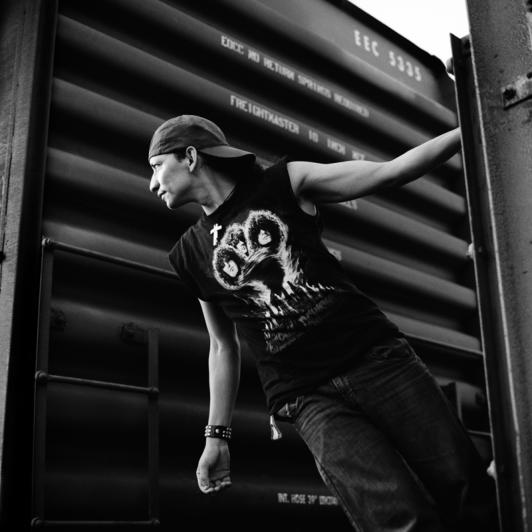
A Salvadoran migrant hangs off the back of a cargo train in the Arriaga rail yard. Arriaga is
the railhead town in the south Mexican state of Chiapas. July 2010.
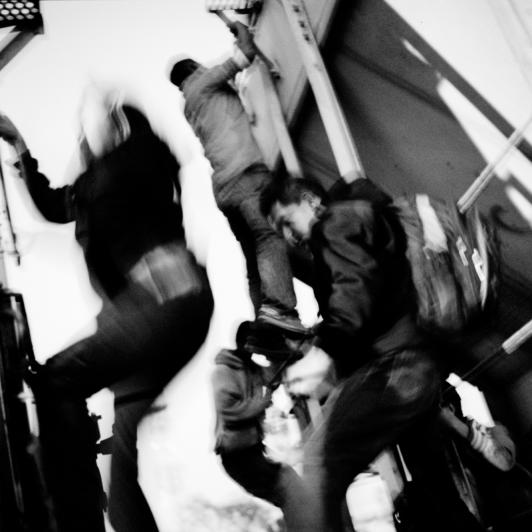
Undocumented Central American migrants, predominantly from El Salvador, Honduras, and
Guatemala scramble to board a cargo train in Arriaga, in the southern Mexican state of
Chiapas. Arriaga, located approximately 230 kilometers west of the Guatemalan border is
the first stop along the train route. January 16, 2014.
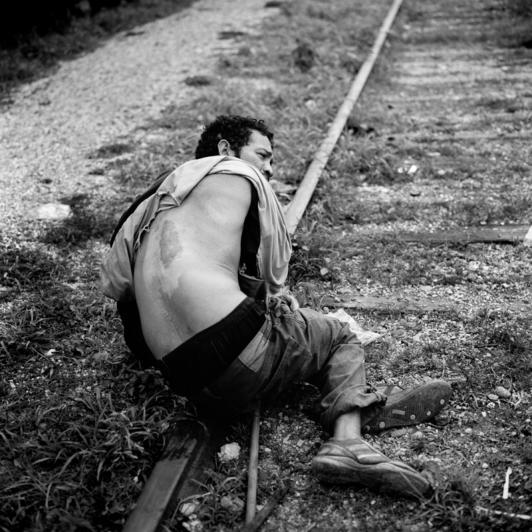
A Nicaraguan migrant whose injuries include a shattered pelvis and several crushed
vertebrae suffered during a train derailment spends most of his days intoxicated and
rambling in the Arriaga rail yard.July 17, 2010.
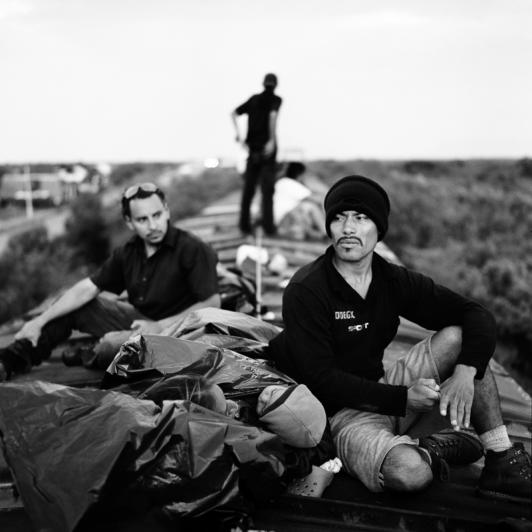
A Salvadoran man, his wife and his 18-month-old son ride a northbound freight train
through the southern Mexican state of Oaxaca along with other Central American migrants.
The nearly 13-hour train ride from Arriaga in Chiapas to Ixtepec, Oaxaca marks the first leg of the journey by freight
train for migrants traveling across Mexico in an attempt to reach the U.S. border. Most will be caught and deported.
Others run a risk of being kidnapped by Los Zetas, a renegade battalion of a Mexican military unit initially deployed to
combat drug trafficking. The journey is so arduous that many simply give up and either return home, or elect to look for
work in Mexico. Upon reaching the U.S. border, migrants must pay a coyote - a smuggler up to $3,000 to get them to
their destination in the U.S. Heightened security along the nearly 3000 mile stretch of border has made the crossing
more dangerous than ever, as smugglers lead migrants through increasingly isolated terrain in order to avoid detection.
July 18, 2010.

A Salvadoran migrant feeds her 18-month-old son at the Home of Mercy migrant shelter in
Arriaga. Central American migrants enter Mexico from various points along the porous
Guatemala - Mexico border. In order to avoid Mexican Migration checkpoints, some journey
approximately 150 miles by foot to the small town of Arriaga in the Mexican state of Chiapas.
Arriaga is one point of origin for the network of northbound freight trains that migrants use
as a way of reaching the United States border. July 14, 2010.
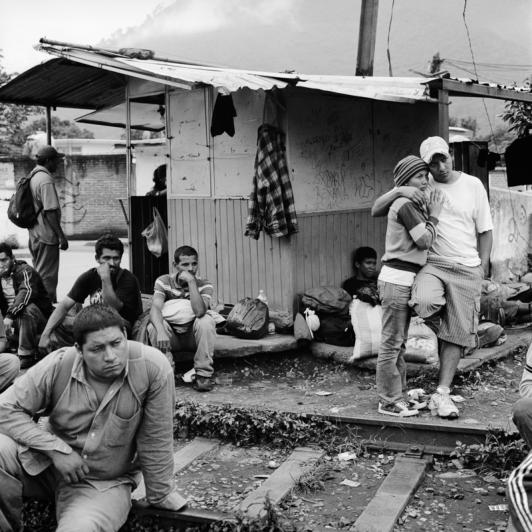
Central American migrants wait for a northbound train by the tracks in the city of Orizaba in
the Mexican state of Veracruz. There is no migrant shelter in Orizaba and migrants wait out
in the open, often for days to catch moving freight trains. July 22, 2010.
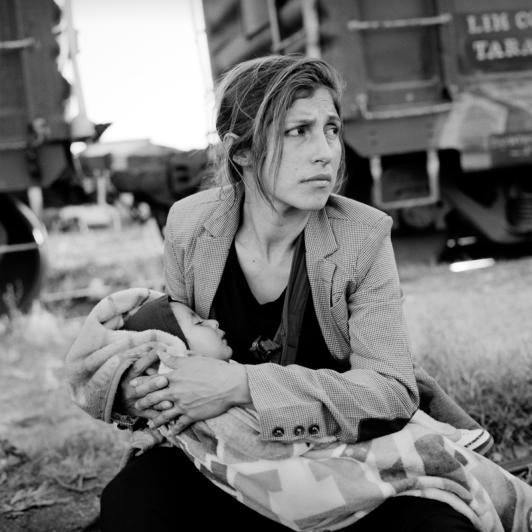
A Guatemalan woman fleeing an abusive husband waits for a northbound train in the
railhead town of Arriaga in the Southern Mexican state of Chiapas. The woman was
traveling with her two other small children, accompanied by a sister and a male relative. The
number of women traveling with small children has spiked dramatically in recent years, due
to a pandemic of domestic violence and drug/gang-related violence, predominantly in
Honduras, El Salvador, and Guatemala. January 16, 2014.
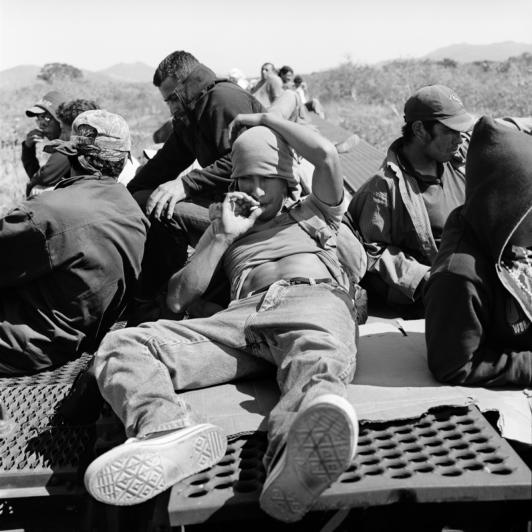
Central American migrants ride atop a northbound freight train through the Mexican state of
Oaxaca in an attempt to reach the United States.February 5, 2011.

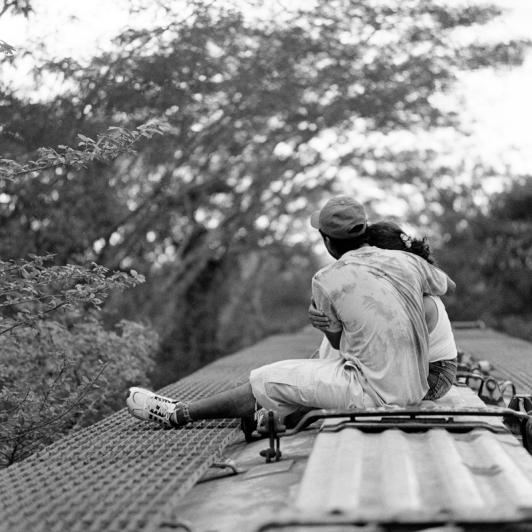
Guatemalan couple, Oaxaca. June 2009.
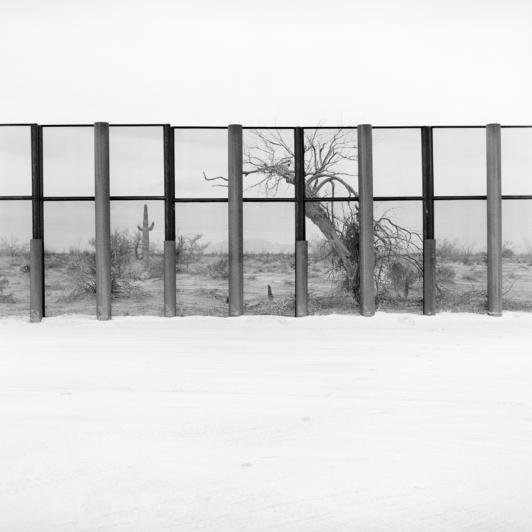
Border fence, Yuma County, Arizona. August 2012.
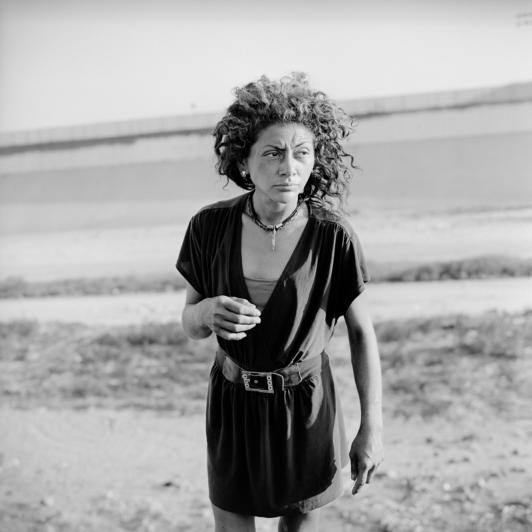
Woman on the levee of the canal zone that literally straddles the U.S. - Mexican border.
Known as "El Bordo," the canal zone is home to a community of heroin addicts, many of
whom were deported from the United States. Tijuana, Baja California, 2012.
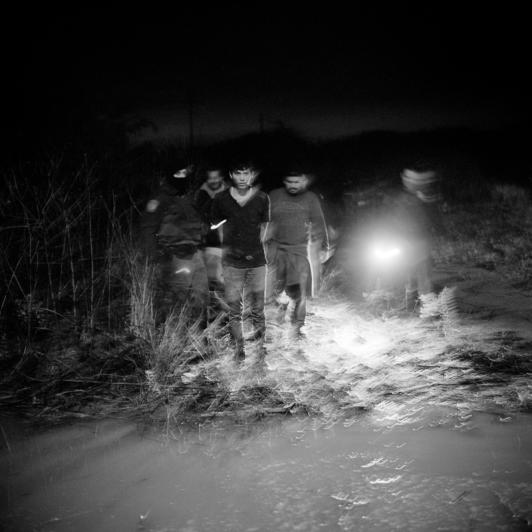
U.S. Border Patrol apprehension of migrants, Rio Grande Valley Sector near McAllen, Texas.
April 29, 2013.






